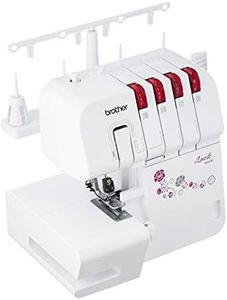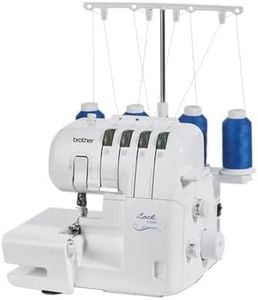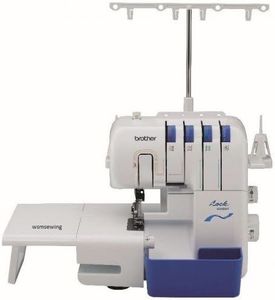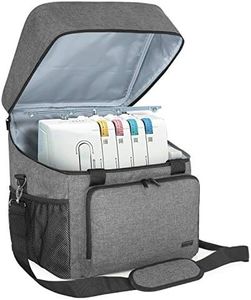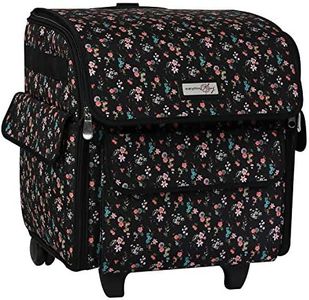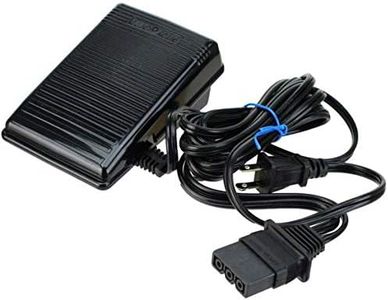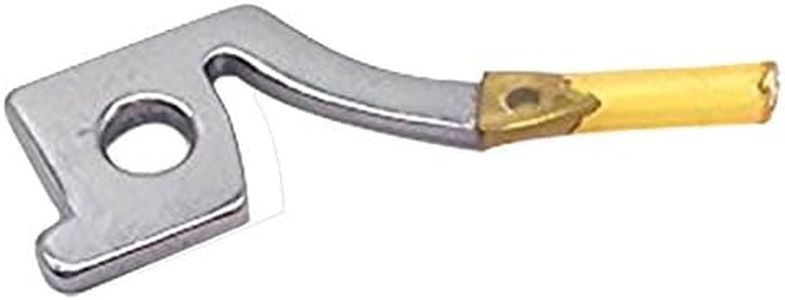We Use CookiesWe use cookies to enhance the security, performance,
functionality and for analytical and promotional activities. By continuing to browse this site you
are agreeing to our privacy policy
7 Best Brother Serger
From leading brands and best sellers available on the web.Buying Guide for the Best Brother Serger
Choosing the right serger, often called an overlocker, can really elevate your sewing projects by giving your garments a professional, neatly finished edge. Sergers handle tasks like trimming seams and preventing fraying, but with their wide range of features and complexity, it’s important to focus on those specifications that match the way you sew. By understanding a serger’s essential features, you’ll be better prepared to make a choice that suits your level, project types, and expectations for performance and convenience.Number of ThreadsThe number of threads a serger can use at once determines how sturdy and flexible your stitches can be. Sergers usually range from 2-thread machines up to 5 threads. Beginner users often find 3-4 thread models to be a sweet spot, as these allow for balanced durability and versatility. More threads can mean stronger seams and the ability to do more specialty stitches, while fewer threads can keep things simple and are suitable for lighter finishing work. If you plan on making clothes that will face stress or stretch, or if you want to try advanced stitching techniques, opt for a serger with more threads. Alternatively, if you just want to neaten seam edges, fewer threads may be sufficient.
Differential FeedDifferential feed refers to the ability of the serger to adjust how the fabric layers move under the needles. This feature is especially important when working with tricky fabrics such as knits or stretchy materials that are prone to distortion. With adjustable differential feed, you can prevent fabric from puckering or stretching out of shape. Look for a serger with this adjustment dial if you plan on sewing a variety of fabrics or want perfectly even stitches. If you work mostly with stable materials like woven cotton, this may be less critical, but for garment sewing, differential feed is very helpful.
Stitch VarietyStitch variety describes the types of stitches and finishes your serger can create, such as rolled hems, flatlock seams, and decorative edges. Greater stitch variety generally means more creative or professional options for finishing your projects. If your sewing is mostly basic (finishing seam edges and hemming), fewer stitch options may suffice. If you want your serger to take on specialty projects, home décor, or detailed garment work, consider a machine with an expanded stitch menu.
Ease of ThreadingSergers can be notorious for difficult threading, so ease of threading is a feature that can significantly impact your experience. Some machines have color-coded guides, lay-in threading, or even automatic threading to simplify this step. If you value convenience or worry about frustration, prioritize a machine known for easy threading. However, if you’re confident with detailed work and have good eyesight, you might get by with a standard system.
Adjustable Stitch Length and WidthBeing able to adjust the length and width of your stitches gives you better control over the final look and durability of your seams. This flexibility is useful if you switch between fabrics of different weights or want to experiment with different finishes. For simple, single-purpose projects, this may not be vital, but for frequent garment sewing or experimentation, having this adjustability will be much more satisfying.
Free Arm CapabilityA free arm feature allows you to easily sew cylindrical pieces like sleeves, cuffs, and small hems. This is useful for those who plan on making lots of clothing, especially for children or more detailed projects. If your projects rarely involve tubes or narrow openings, this feature may not be as important for your needs.
Speed ControlSpeed control determines how quickly your serger operates, often measured in stitches per minute. Having the ability to sew faster can be helpful for large projects, while a slower pace is better for precision work and beginners. If you’re just starting out or tend to work on smaller, detailed projects, favor a serger with good speed control—or one that operates at a moderate speed that feels comfortable.
